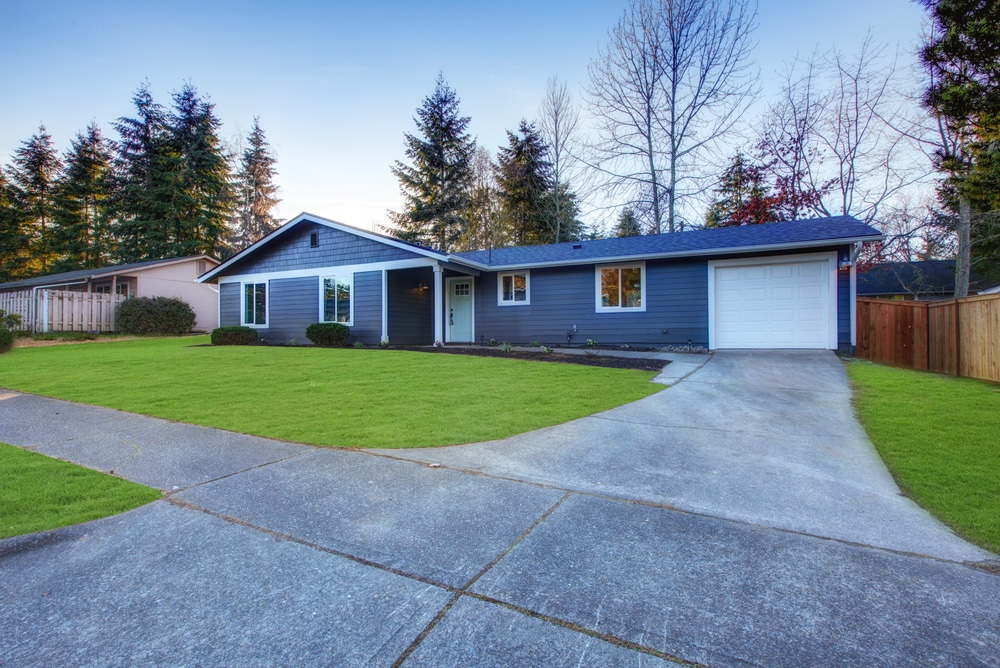In some areas, low pitched roofs are slowly replacing traditional steep roofs, and although they are fairly common now, few people know what this means for their roof style options. While a low pitched roof does allow you to take full advantage of your home’s space, it can also pose problems if they aren’t fully planned out.
If you have a low pitched roof, it’s important to keep some pointers in mind when it comes time to decide what roof style you want for your home.
What Is a Low Pitched Roof?
Low pitched roofs are roofs with a very minimal slope. These types of roofs will require additional waterproofing materials and a few extra protections as they won’t shed water as easily.
Typical roof pitches measure 6:12, meaning that for every 12 horizontal feet, the roof increases 6 feet vertically. With a low pitched roof, however, the roof may only change ¼ foot (3 inches) vertically per every 12 horizontal feet. The steepest low pitched roof measures 4:12, increasing 4 vertical feet every 12 horizontal feet.
Concerns With Low Pitched Roof
As can be expected, there are a few concerns that come with low pitched roofs. No matter what the climate is like where you live, these are a few common concerns to keep in mind.
Drainage
Low pitched roofs have a harder time shedding rainwater than steeper pitched roofs. While they will certainly have an advantage over flat roofs, low pitched roofs need to be equipped with extra waterproofing materials to avoid leaks and drainage issues later on.
Debris Buildup
Because low pitched roofs don’t have gravity working for them, it’s much more likely that debris that lands on your roof will get stuck and stay there. This can be anything from twigs and branches that come from nearby trees to trash and dirt that blows in with the wind.
Debris buildup can lower property value and damage your roof, so it’s important that low pitched roofs are frequently cleaned and inspected for debris and damage.
Direct Sunlight
Direct sunlight may seem like a great thing if you have solar panels, but it can cause damage to your roofing materials if you have a low pitched roof. Ultraviolet rays can really harm your roof, with or without solar panels, so it’s important to invest in roofing materials that can take the heat.
I Have a Low Pitched Roof, What Are My Roof Style Options?
Just because you have a low pitched roof does not mean that you’re out of luck. There are a number of different roof styles that are possible, you just need to be prepared to invest in the material that will work best with your home aesthetic and your local climate.
Shingles
Shingles are extremely durable and work great on low pitched roofs. Your roof will need a slope of at least 2:12 in order for most shingles to work, but some roofers may require a steeper slope. In any case, shingles are a great water shedding material and can work on low pitched roofs.
Single-ply Membranes
Single-ply membranes are laid across the surface of your roof and then hot-air welded together. They are often made from PVC or TPO and reinforced with either polyester or fiberglass. They are fairly inexpensive and only require one layer to be efficient, but they do need routine maintenance.
Torch Down Roofing
Using bitumen, a hydrocarbon-based material, this roofing material is sealed onto the roof using a propane torch. As a result, the material is completely waterproof and won’t expand or contract with the weather. It’s especially great for harsh climates, is easy to repair, and has a long lifespan.
Conclusion
Low pitched roofs require a bit of extra planning, but they aren’t so limiting that you only have one or two roof style options. For more information, speak with our Orlando roofing company, and we’ll help you be able to make an informed decision and pick the best roof style for your home.


